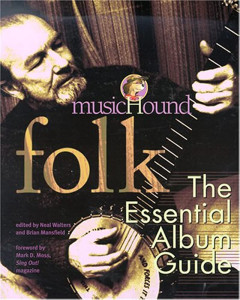 The music guides of musicHound Folk, musicHound World, and The Rough Guide to World Music, Volume One have been in use by me for some time now. So which is the best, in my opinion? It depends on what you’re looking for in a world music reference guide, as the two guides approach the same subject matter in dramatically different ways.
The music guides of musicHound Folk, musicHound World, and The Rough Guide to World Music, Volume One have been in use by me for some time now. So which is the best, in my opinion? It depends on what you’re looking for in a world music reference guide, as the two guides approach the same subject matter in dramatically different ways.
The musicHound World guide is, like almost all music reference guides, arranged alphabetically by artist. It is, to a great extent, based on earlier musicHound guides, including musicHound Folk. Unlike The Rough Guide to World Music, it is skewed towards North American artists and is much heavier on Celtic artists of all sorts. In musicHound Folk both Brian McNeill and the Battlefield Band get extensive write-ups. In The Rough Guide, McNeill warrants just a brief mention for his No Gods album, and the Battlefield Band rates but a short paragraph. If you want to know more about an artist you’re interested in, clearly musicHound Folk and musicHound World are your better choices.
Why is this so? Let’s go back to Brian McNeill for a moment as he’s a good example to use. Using The Rough Guide, you’ve purchased and enjoyed his No Gods CD, but now are interested in what else he’s done. Well, you could read GMR, but you’re better off checking out the musicHound Folk guide, as it will tell you almost everything that you need to know about this artist.
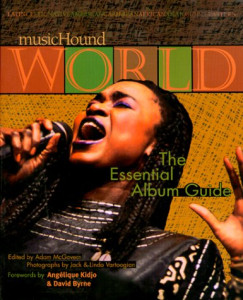 The musicHound guides don’t purport to be the definitive history of Celtic, old-time bluegrass, string-band music, or singer-songwriters. However, they do provide short, well-written summaries of the careers of a wide-ranging host of folk singers, old-time country acts, blues musicians, etc., with recommended and must-avoid recordings. The writers who penned the reviews run the gamut from Jo Morrison, who writes for us, to No Depression editor Peter Blackstock. Overall, they rate an A+ for content. The entry for McNeill in musicHound Folk gives a decent bio for him, tells you what to look for first, and gives you an idea of what to hunt down later. It rightfully refers the reader to the Battlefield Band entry because Brian was a founding member of that group.
The musicHound guides don’t purport to be the definitive history of Celtic, old-time bluegrass, string-band music, or singer-songwriters. However, they do provide short, well-written summaries of the careers of a wide-ranging host of folk singers, old-time country acts, blues musicians, etc., with recommended and must-avoid recordings. The writers who penned the reviews run the gamut from Jo Morrison, who writes for us, to No Depression editor Peter Blackstock. Overall, they rate an A+ for content. The entry for McNeill in musicHound Folk gives a decent bio for him, tells you what to look for first, and gives you an idea of what to hunt down later. It rightfully refers the reader to the Battlefield Band entry because Brian was a founding member of that group.
Neither of the musicHound guides is perfect. I will offer the example of the Blowzabella entry by Jo Morrison that first appeared in musicHound Folk and was reprinted verbatim in musicHound World. Jo holds that Blowzabella disbanded in 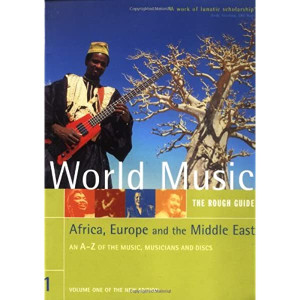 1990, which is not correct; it still exists as a ceilidh band of notable distinction. She also fails to note that Osmosys, an English CD company, has re-released A Richer Dust (in 1998), Blowzabella Wall of Sound (in 1995), Bobbityshooty (in 1998), and Compilation (in 1996). And please don’t look for the Vanilla release (Green Linnet, 1990) as it was delisted by Green Linnet three years ago. This is not the fault of the reviewer, but is very poor fact checking by the editors of these guides. In this age of endless digital resources, one should be able to confirm what’s available and what is not.
1990, which is not correct; it still exists as a ceilidh band of notable distinction. She also fails to note that Osmosys, an English CD company, has re-released A Richer Dust (in 1998), Blowzabella Wall of Sound (in 1995), Bobbityshooty (in 1998), and Compilation (in 1996). And please don’t look for the Vanilla release (Green Linnet, 1990) as it was delisted by Green Linnet three years ago. This is not the fault of the reviewer, but is very poor fact checking by the editors of these guides. In this age of endless digital resources, one should be able to confirm what’s available and what is not.
Now on to the matter of The Rough Guide to World Music, Volume One. Do not buy this as a guide to purchasing CDs. Do buy this if you’re truly and deeply interested in learning more about musical styles from a regional perspective. Simon Broughton is the editor of Songlines, a new world music magazine that likes really obscure musical genres. This is a really great reference guide if one knows nothing about a specific region or style — that is its greatest strength. Volume One covers Africa, Europe, and the Middle East, so I can do a direct comparison with musicHound World. Volume Two, which covers Latin and North America, India, Asia, and the Pacific, is just as detailed, and generally just as useless when it comes to being a source for CDs. The authors seem to favour the most obscure labels. Bleedin’ hell, even the resources of Green Man, unmatched in finding the obscure, couldn’t get most of these CDs. Citing obscure CDs is nice to indicate how cool the reviewer is, but not bloody useful for the listener!
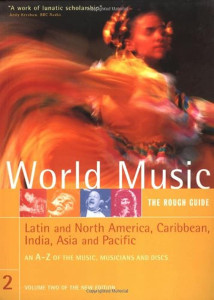 The Battlefield Band has done as much to popularize Celtic music as any group other than the Chieftains, but they barely warrant a few lines and a brief write-up of their Rain, Hail, or Shine CD. The problem is, The Rough Guide to World Music, Volume One is so intent on listing as many groups as possible that almost no one gets more than a brief mention. Only the artists featured in drop boxes get slightly longer commentaries; e.g., Aly Bain and the Boys of the Lough. This is a great approach to music if you know nothing or next to nothing about a musical genre, but is less than ideal otherwise. And The Rough Guide misses important groups altogether — for example, the Peatbog Faeries aren’t even mentioned in passing in this volume! And Blowzabella barely rates a passing reference, despite the fact that the group is largely responsible for resurrecting the English bagpiping tradition!
The Battlefield Band has done as much to popularize Celtic music as any group other than the Chieftains, but they barely warrant a few lines and a brief write-up of their Rain, Hail, or Shine CD. The problem is, The Rough Guide to World Music, Volume One is so intent on listing as many groups as possible that almost no one gets more than a brief mention. Only the artists featured in drop boxes get slightly longer commentaries; e.g., Aly Bain and the Boys of the Lough. This is a great approach to music if you know nothing or next to nothing about a musical genre, but is less than ideal otherwise. And The Rough Guide misses important groups altogether — for example, the Peatbog Faeries aren’t even mentioned in passing in this volume! And Blowzabella barely rates a passing reference, despite the fact that the group is largely responsible for resurrecting the English bagpiping tradition!
So I recommend you take your spare halfpennies and buy both of the musicHound guides. Skip the two volumes of The Rough Guide to World Music unless you’re seriously into studying world music from a genre or regional basis. But do buy these volumes if you are seriously interested in knowing everything there is about traditional and sometimes not so traditional world music, as these are the best general overviews of the subject on the market today. There are better specialized reference works, such as The Rough Guide to Irish Music or Celtic Music: Third Ear — The Essential Listening Companion will serve you much better for those areas, and do a much better job of sticking to CDs that one has a reasonable chance of finding!
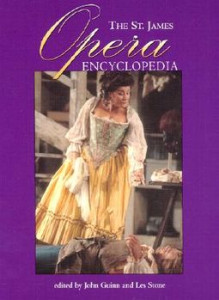 And now for something completely different … Opera is certainly part of the folk tradition — for example, Michael Jones reviewed John Gay’s The Beggar’s Opera, the first ballad opera, and firmly in the folk genre with its thieves, highwayman, crooked jailers, and whores. Me wife is more interested in opera than I am, but even I have come to enjoy it when it is on television. And I find The St. James Opera Encyclopedia: A Guide to Works and People to be comprehensive (almost a thousand pages!) and incredibly useful. Everything I want to know about opera, from its history to the major performers, to almost every opera and operetta done, is here. For example, we watched the Metropolitan Opera production of The Marriage of Figaro a few months back. Cecilia Bartoli was the mezzo-soprano for that production, but I knew nothing ’bout her other than she was really sexy. The St. James Opera Encyclopedia gave me a very nice bio of her, including her training and what productions she has been in. The encyclopedia also offers critical analysis, plot and character overviews, composition, and production details. It certainly has become an important part of our reference collection!
And now for something completely different … Opera is certainly part of the folk tradition — for example, Michael Jones reviewed John Gay’s The Beggar’s Opera, the first ballad opera, and firmly in the folk genre with its thieves, highwayman, crooked jailers, and whores. Me wife is more interested in opera than I am, but even I have come to enjoy it when it is on television. And I find The St. James Opera Encyclopedia: A Guide to Works and People to be comprehensive (almost a thousand pages!) and incredibly useful. Everything I want to know about opera, from its history to the major performers, to almost every opera and operetta done, is here. For example, we watched the Metropolitan Opera production of The Marriage of Figaro a few months back. Cecilia Bartoli was the mezzo-soprano for that production, but I knew nothing ’bout her other than she was really sexy. The St. James Opera Encyclopedia gave me a very nice bio of her, including her training and what productions she has been in. The encyclopedia also offers critical analysis, plot and character overviews, composition, and production details. It certainly has become an important part of our reference collection!
(Visible Ink Press, 1998)
(Visible Ink Press, 2000)
(Rough Guides, 1999)
(Rough Guides, 2000)
(Visible Ink Press,1997)
